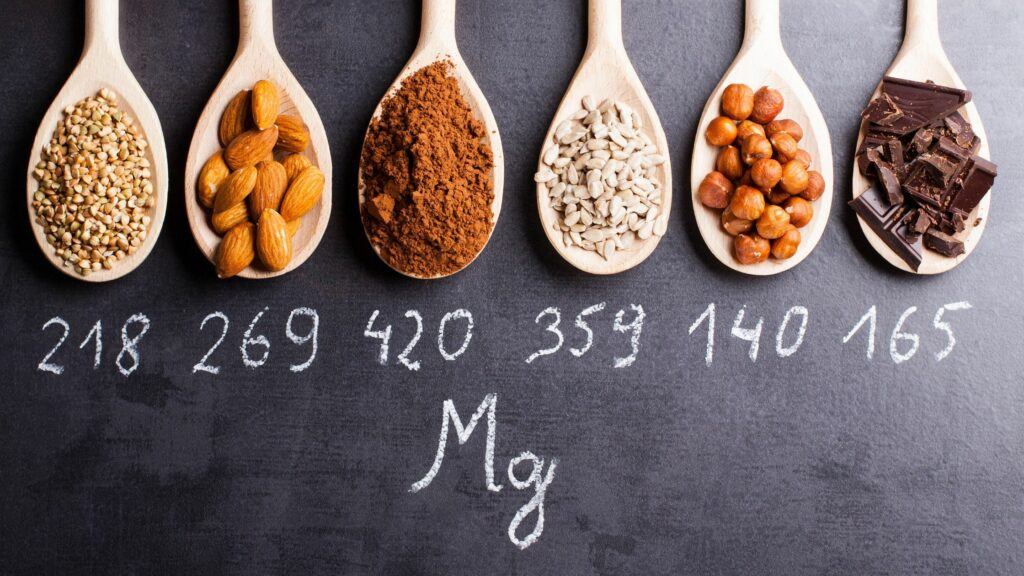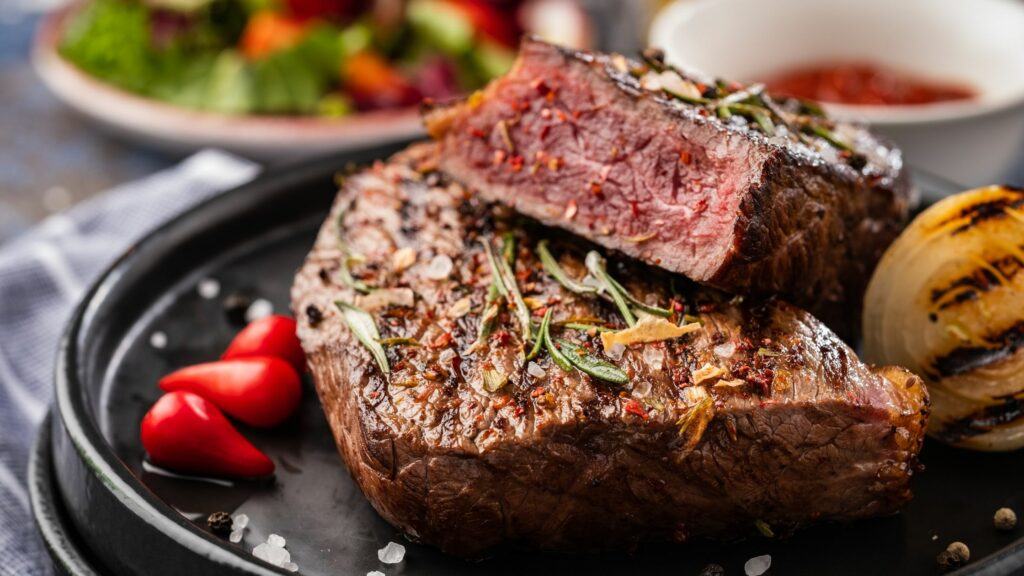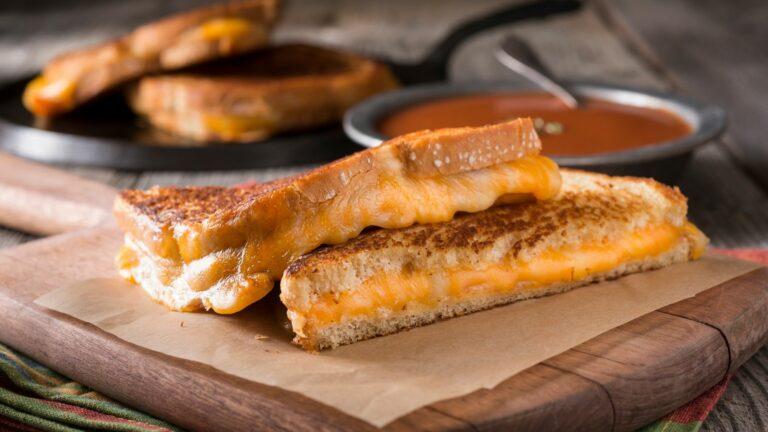8 Common Food Cravings & What They Actually Mean
Food cravings are often our body’s’ way of telling us that something is lacking, but sometimes we need an interpreter to help decipher exactly what the body is saying. For instance, craving French fries doesn’t mean our body needs French fries. This craving has more likely developed due to a deficiency in essential fatty acids.
Unfortunately, understanding what our food cravings actually mean isn’t always cut and dry. Modern foods have been designed to be hyperpalatable, meaning they taste great but are not filling and offer very little nutrition. Chemicals in many processed foods can also disrupt our normal hormone cues for hunger and satiety, resulting in us craving more of these empty foods.
Once we eliminate processed foods, and consume more nutrient-dense whole foods, we reduce the confusion, making it easier for us to interpret what our body is trying to tell us. In this article we will examine 8 of the most common food cravings, highlight the deficiency or deficiencies that may be contributing to these cravings, and offer healthy food options to help address these deficiencies and eliminate the cravings.
1) Acidic Foods, Chocolate or Sweets
This is a broad category, and may include cravings for things like grains, sugars, dairy, citrus fruit, salsas, sodas, candy, and chocolate.
Reason: Magnesium Deficiency
What to eat: Raw cacao nibs or sugar free chocolate, raw cacao, nuts, pumpkin seeds, avocados, dark leafy greens and fish such as salmon or halibut.

Magnesium deficiency is the root cause of several types of cravings. Although there are many foods that contain magnesium, the amount present in these foods has declined over the years as a result of minerals being depleted from the soils they are grown in.
Getting enough magnesium can therefore be difficult even when consuming a well-balanced whole food diet. For that reason, many health professionals recommend supplementing with chelated magnesium. It is the most bioavailable form of magnesium, and does not cause the digestive upset or laxative effects common among other types of magnesium supplements.
Chocolate, or more specifically cacao is extremely high in antioxidants and magnesium, and doesn’t need to be avoided. It’s simply the sugar that is in most chocolate or chocolaty foods that is the problem. ChocZero offers a variety of chocolate treats sweetened with monk fruit instead of sugar, and Lilly’s brand chocolate chips and chocolate bars are sweetened with stevia. Look at the ingredients thoroughly before purchasing however, as many of their products do contain milk.
Another option for all of the chocolate lovers out there is keto hot cacao. I consume a cup almost every day, and I often add collagen powder to help boost my protein intake, and gently break my fast.
2) Carbonated Beverages or Soda
Reason : Calcium deficiency
What to eat: Broccoli, kale, mustard greens, almonds, chia seeds, tahini.
Unlike magnesium, it is quite easy to get enough calcium from your diet, even without consuming dairy. Contrary to popular belief dairy is not the best source of calcium, and many dairy products are actually fortified with calcium carbonate, which is not a very useful form of calcium.
Calcium supplementation is not necessary for healthy individuals consuming a well-rounded diet. It is however, commonly recommended for post-menopausal women, vegans, people with conditions that interfere with calcium absorption such as Crohn’s disease or inflammatory bowel disease, and people receiving long term cortical steroid treatments.
If you choose to supplement with calcium, be sure to select food-based sources such as Naturelo’s Bone Strength.
Consuming carbonated beverages doesn’t have to derail your diet. Sparkling water can actually help blunt your appetite and make it easier to drink more water throughout the day. A SodaStream sparkling water maker and stevia sweetened Stur water enhancer drops are a great combo for creating healthy carbonated beverages at home, and mother earth will thank you.
3) Cheese or Fried Foods
Reason: Essential fatty acid deficiency
What to eat: Salmon, ground flax seeds, nuts, avocado, olive oil, coconut oil.
Fat is super satiating, and consuming adequate amounts of fat is the main reason people that follow keto often report that they rarely feel hungry or experience cravings. Being deficient in essential fatty acids will result in cravings for fatty foods, and having healthy options readily available will prevent you from going to the dark side.
4) Sugar
Reason: Sugar cravings can be a little more difficult to manage since sugar acts more like a drug than food in the body. Sugar does not contain any essential nutrients, so your body is not telling you to consume sugar to fulfill some type of deficiency. Craving sugar may mean that your body is looking for some quick energy, but mild dehydration may also be to blame.
What to eat: The worst thing you can do is give in to this craving and consume sugar as this will only intensify the cravings. Eliminating sugar from your diet entirely can be difficult, but it really is the only way to stop your body from craving it. Staying hydrated, and swapping sugar with healthy alternatives like stevia, monk fruit, or erythritol whenever possible can help.
I like to add a little electrolyte powder to my water and sip on during workouts or throughout the day. I prefer Dr. Berg’s electrolyte powder because it contains magnesium, trace minerals, has a high potassium to sodium ratio, and is sweetened with stevia. This approach helps me stay hydrated and satisfies my desire for sweets.
5) Salty Foods
Reason: Chloride deficiency, which just means you are lacking salt (sodium chloride) in your diet.
What to eat: Fish, celery, olives, tomatoes, lettuce, seaweed, or sea salt (Redmond’s Real Salt is our recommended brand because of it’s high mineral content and because it’s harvested here in the US)
A specific sodium balance is required for many processes in the body. Sodium can be lost through our urine and sweat during times of stress or strenuous exercise, or it can be diluted by drinking too much water. Keeping your sodium levels balanced can be as simple as adding a pinch of sea salt or electrolyte powder to your water each day, or consuming healthy foods that are naturally high in sodium.
6) Coffee

Reason: The caffeine in coffee is addictive which can cause you to crave more of it, but it may also be an indicator that you are deficient in phosphorous.
What to eat: Chicken, beef, liver, eggs, garlic, mushrooms, almonds, pumpkin seeds, sesame seeds, Brazil nuts.
Phosphorous is essential for healthy teeth and bones, and plays a key role in how we process carbohydrates, fats and protein. Except in instances of severe starvation, it is pretty rare to be deficient in phosphorous, however if you are deficient in other vitamins, like vitamin D, you may have difficulty absorbing phosphorous even though you are consuming enough.
7) Pasta, Bread, Pastries (carbs)
Reason: Some foods contain addictive substances that can have morphine-like effects on the brain. Dairy for instance contains casomorphins and wheat and other gluten grains contain gluteomorphins, also known as gliadorphins. Attempting to reduce these types of carbs in your diet can result in greater cravings for these foods, but may also be a sign that your diet is low in Chromium.
What to eat: Onion, romaine lettuce, tomato, Ceylon cinnamon, peppers, avocado, broccoli, celery, chard.
Chromium helps lower blood sugar, and aids the body in responding to insulin. It may also help reduce hunger and cravings. As a result of these benefits, it is often marketed as a diet or weight loss aid in the form of chromium picolinate, but you do not need to supplement chromium.
Similar to magnesium, the amount of chromium in food depends on the quality of the soil, but it is present in many foods, and we really don’t need very much. Chromium supplements have not been shown to offer any real benefits when it comes to weight loss, and have been found to interact with some medications, including beta-blockers and non-steroidal anti-inflammatory drugs.
8) Red Meat

Reason: Iron deficiency
What to eat: Red meat is high in iron and is healthy to consume regularly, as long as you select grass-fed pasture raised varieties. If you are trying to limit or exclude red meat from your diet, spinach, leafy greens, seafood, eggs, nuts, seeds, and seaweed are also good sources of iron.
Iron deficiency is actually quite common, especially in women during menstruation and pregnancy, and in children during periods of rapid growth or development. Some medical conditions and digestive issues can impact the amount of iron you are able to absorb, which may also lead to deficiencies.
Cravings for red meat may be a sign that your iron levels have dipped temporarily, which can be easily rectified through diet. Chronically low iron levels, aka. Anemia, however, may present as general fatigue, weakness, pale skin, shortness of breath, brittle nails, headaches, tongue swelling or soreness, tingling in the legs, cold hands and feet, irregular heartbeat, and cravings for odd things like dirt, ice, or clay.
Vitamin C can help improve iron absorption, and iron supplementation is an option, but consuming too much iron can be harmful. If you suspect that you are chronically deficient in iron, or suffer from medical conditions that may impact iron absorption, consult your doctor for guidance.
Anemia, can be easily diagnosed with a complete blood count (CBC) test that measures red and white blood cells, hemoglobin, hematocrit, and platelets. For convenience, you can order a CBC test for as little as $28 from Health Labs, Health Testing Centers, or Personal Labs, and have the results sent to you.
Summary
Food cravings can sometimes be the result of nutrient deficiencies, but consuming processed foods, grains, and dairy can make it difficult for us to interpret what our body is trying to tell us. If you have read through this entire article, it has probably become apparent why people following the keto diet generally experience fewer cravings.
Keto is high in healthy fatty acids, so cravings for cheese, French fries, or potato chips is generally lessened. Avocados, eggs, leafy greens, cruciferous vegetables, seafood, nuts, and meat are all staples of a standard keto diet, and extremely nutrient dense. Deficiencies may still be possible if some of these foods are excluded due to sensitivities, allergies, or food preferences. In those instances, supplementation may be beneficial.
Do you struggle with food cravings, or have you found ways to manage your food cravings? Please consider sharing your experience by commenting below in order to help others living a fit keto lifestyle.
Thank you for visiting LiveFitKeto.com. Check back often for new content or subscribe to our newsletter to receive updates on new articles, and if you have found this information helpful, please don’t hesitate to share.







